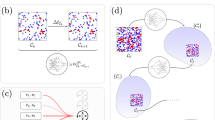Abstract
One-dimensional (string) formal languages and their learning have been studied in considerable depth. However, the knowledge of their two-dimensional (picture) counterpart, which retains similar importance, is lacking. We investigate the problem of learning formal two-dimensional picture languages by applying learning methods for one-dimensional (string) languages. We formalize the transcription process from an input two-dimensional picture into a string and propose a few adaptations to it. These proposals are then tested in a series of experiments, and their outcomes are compared. Finally, these methods are applied to a practical problem and learn an automaton for recognizing a part of the MNIST dataset. The obtained results show improvements in the topic and the potential in using the learning of automata in fitting problems.
Supported by Charles University Grant Agency (GAUK) project no. 1198519 and SVV-260588.
Access this chapter
Tax calculation will be finalised at checkout
Purchases are for personal use only
Similar content being viewed by others
Notes
- 1.
The dataset is available from http://yann.lecun.com/exdb/mnist.
References
Costagliola, G., Deufemia, V., Ferrucci, F., Gravino, C.: On regular drawn symbolic picture languages. Inf. Comput. 187(2), 209–245 (2003)
Freeman, H.: On the encoding of arbitrary geometric configurations. IRE Trans. Electron. Comput. EC-10(2), 260–268 (1961)
Giammarresi, D., Restivo, A.: Two-dimensional languages. In: Handbook of Formal Languages: Volume 3 Beyond Words, pp. 215–267. Springer, Berlin (1997). https://doi.org/10.1007/978-3-642-59126-6_4
De la Higuera, C.: Grammatical inference: learning automata and grammars. Cambridge University Press (2010)
Krizhevsky, A., Sutskever, I., Hinton, G.E.: Imagenet classification with deep convolutional neural networks. In: Advances in Neural Information Processing Systems, pp. 1097–1105 (2012)
Krtek, L.: Learning picture languages using restarting automata. Master thesis, Charles University, Faculty of Mathematics and Physics (2014)
Kubon, D., Mráz, F.: Learning picture languages represented as strings. In: Barták, R., Bell, E. (eds.) Proceedings of the Thirty-Third International Florida Artificial Intelligence Research Society Conference, pp. 529–532. AAAI Press (2020)
Lang, K.J.: Random DFA’s can be approximately learned from sparse uniform examples. In: COLT 1992, pp. 45–52. ACM (1992)
LeCun, Y., et al.: Learning algorithms for classification: a comparison on handwritten digit recognition. In: Neural Networks: The Statistical Mechanics Perspective, pp. 261–276. World Scietific (1995)
Maurer, H.A., Rozenberg, G., Welzl, E.: Using string languages to describe picture languages. Inf. Control 54(3), 155–185 (1982)
Pradella, M., Crespi Reghizzi, S.: A sat-based parser and completer for pictures specified by tiling. Pattern Recogn. 41(2), 555–566 (2008)
Průša, D., Mráz, F., Otto, F.: Two-dimensional sgraffito automata. RAIRO-Theoretical Inf. Appl. 48(5), 505–539 (2014)
Acknowledgements
This research was supported by the Charles University Grant Agency (GAUK) project no. 1198519 and SVV-260588.
Author information
Authors and Affiliations
Corresponding author
Editor information
Editors and Affiliations
Rights and permissions
Copyright information
© 2022 The Author(s), under exclusive license to Springer Nature Switzerland AG
About this paper
Cite this paper
Kuboň, D., Mráz, F., Rychtera, I. (2022). Learning Automata Using Dimensional Reduction. In: Bicharra Garcia, A.C., Ferro, M., Rodríguez Ribón, J.C. (eds) Advances in Artificial Intelligence – IBERAMIA 2022. IBERAMIA 2022. Lecture Notes in Computer Science(), vol 13788. Springer, Cham. https://doi.org/10.1007/978-3-031-22419-5_4
Download citation
DOI: https://doi.org/10.1007/978-3-031-22419-5_4
Published:
Publisher Name: Springer, Cham
Print ISBN: 978-3-031-22418-8
Online ISBN: 978-3-031-22419-5
eBook Packages: Computer ScienceComputer Science (R0)




